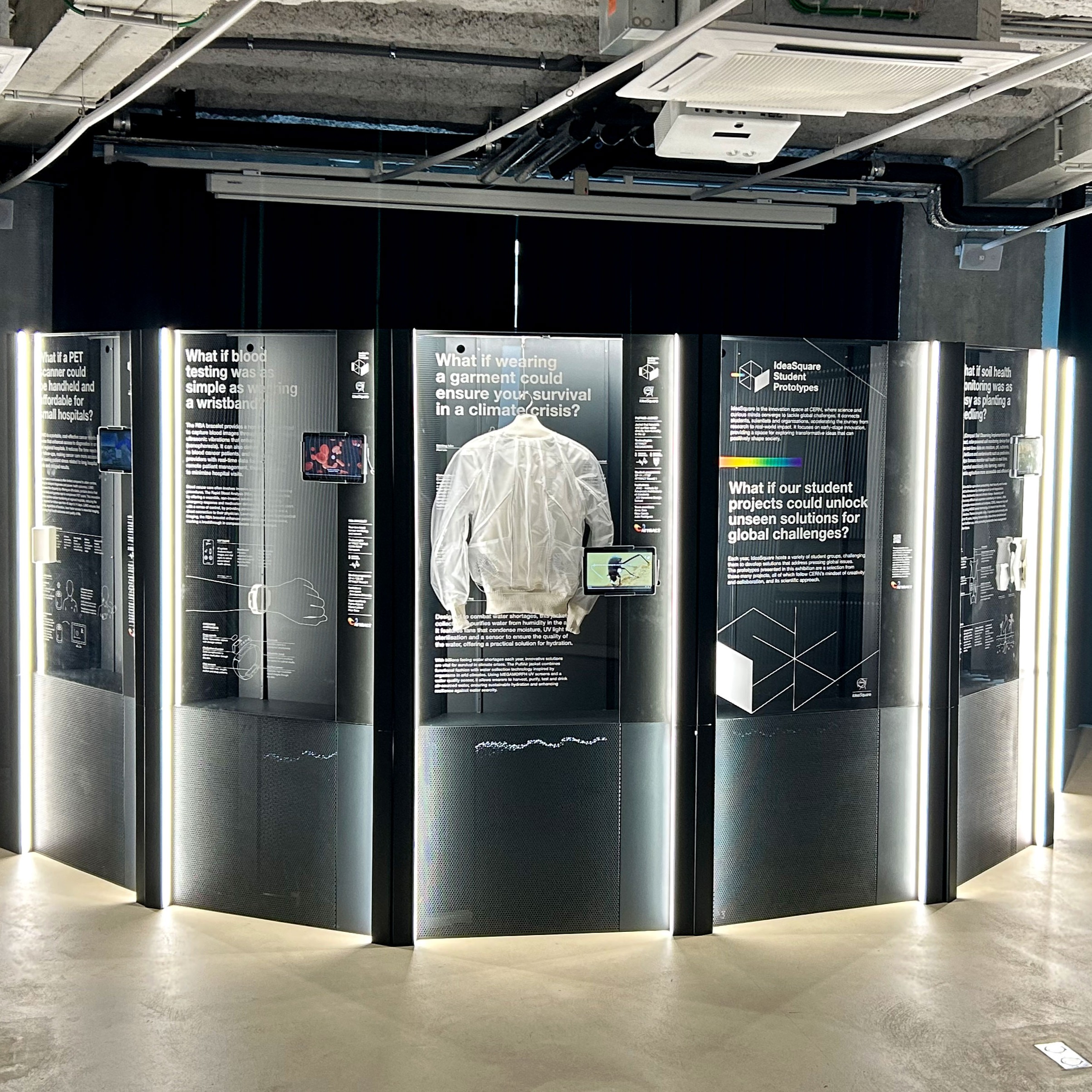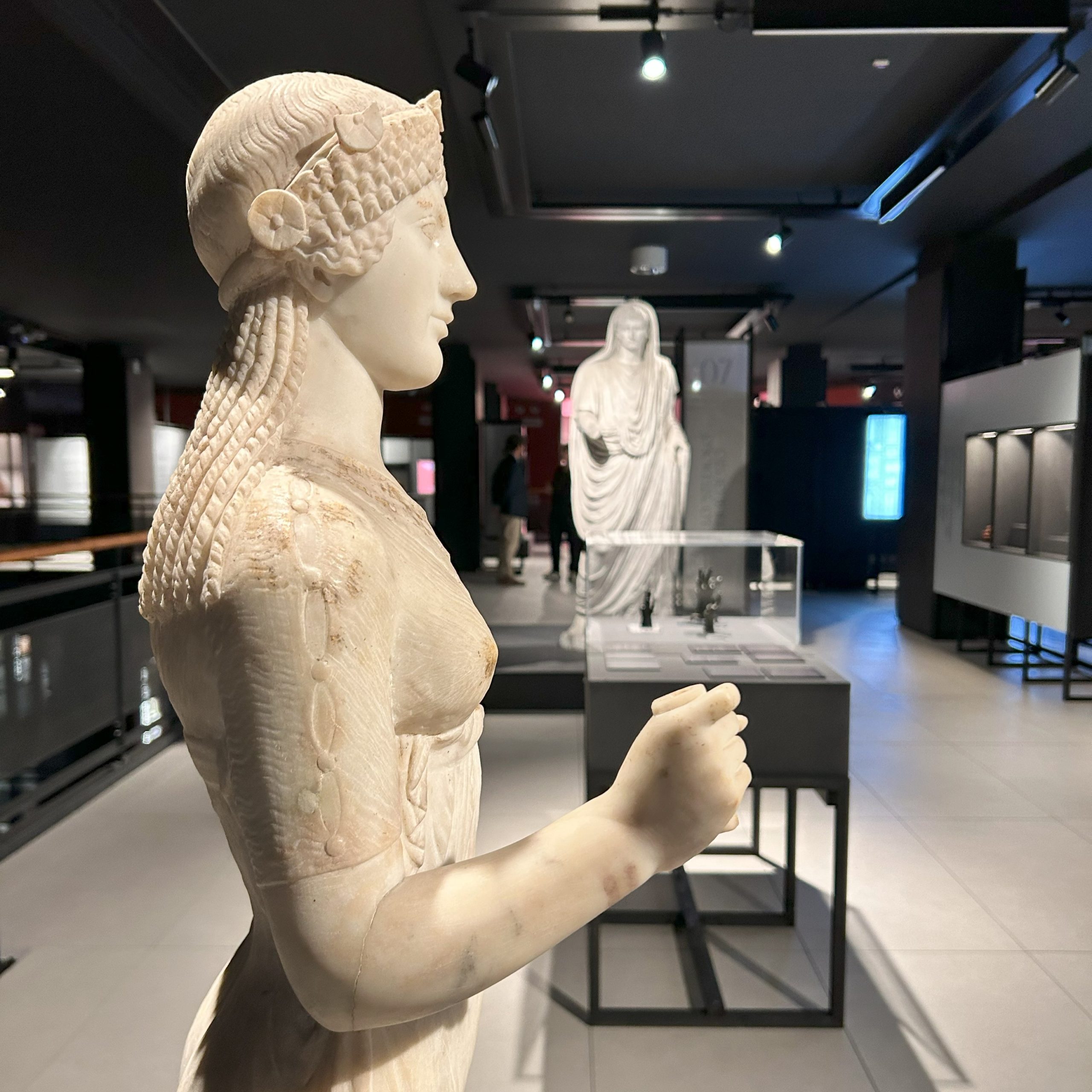Interactive totem for Oristano’s Cathedral
Santa Maria Assunta stands out as Sardinia’s largest cathedral. Raised in the heart of the historic center of Oristano, the earliest records already document the existence of an original Romanesque-style cathedral between 1070 and 1131. Thanks to the exhaustive restoration campaign launched in 2000 and completed in 2022, today we can admire the church’s extensive sacred and architectural history in all its glory.
The Segretariato Regionale del Ministero della Cultura per la Sardegna has entrusted Visivalab with developing an interactive totem to both enhance the restoration actions and make them known to the public. The interactive station allows visitors to discover the building’s history and evolution through pictures of its details and video interviews with the curators.
CLIENT Segretariato Regionale del Ministero della Cultura per la Sardegna
YEAR 2023
FEATURES
- Interactive station with touch screen
- Multimedia content
- Content architecture framed in time and space
- Phase map design
- Interview production
- UX-UI
- Available in two languages
Project
The project was born from the desire of the Regional Secretary, Dott.ssa Patricia Olivo, to value the work carried out by the technicians and professionals involved in the continuous interventions that have modified the monument’s appearance over time. The last improvement campaign ended in 2022, and among others, it has restored the pictorial body, the two Cappelloni of the transept and the 17th-century Archive.
With this goal in mind, we have developed an interactive totem equipped with a touch screen that invites visitors to discover the cathedral’s historical and artistic heritage. The new interactive station, strategically located at the northeast entrance of the building, welcomes visitors and serves as a digital tour guide. Through this tool, users can navigate through the different historical stages of the cathedral and appreciate in detail the restored elements, some of which are out of sight in their original locations.
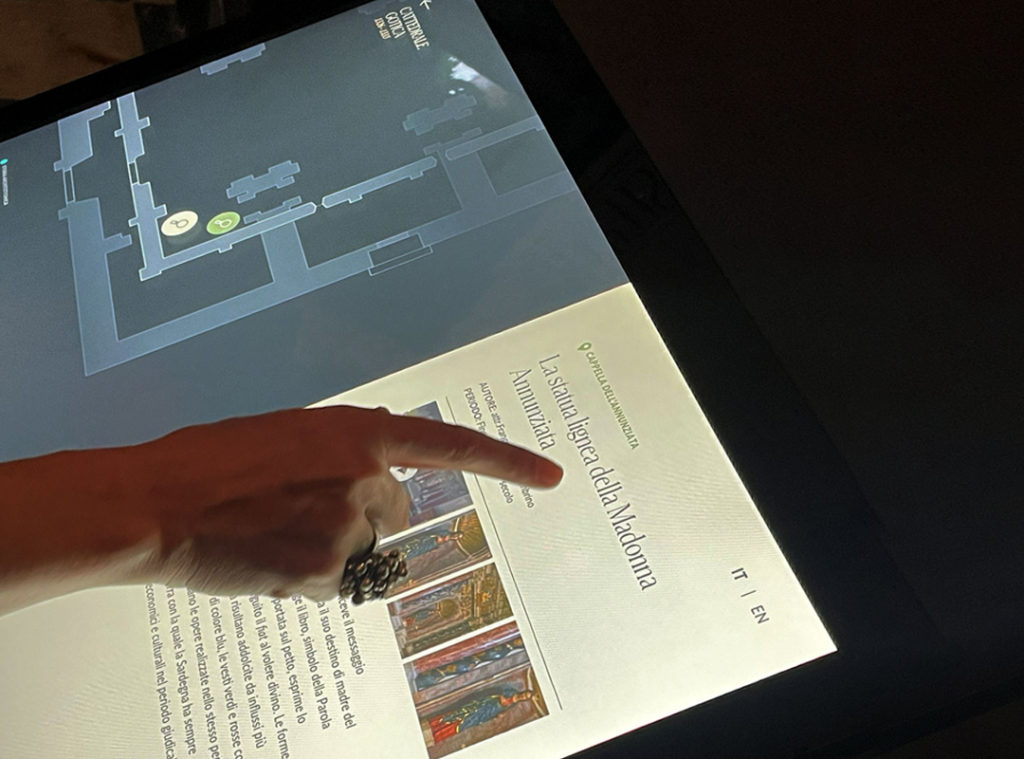
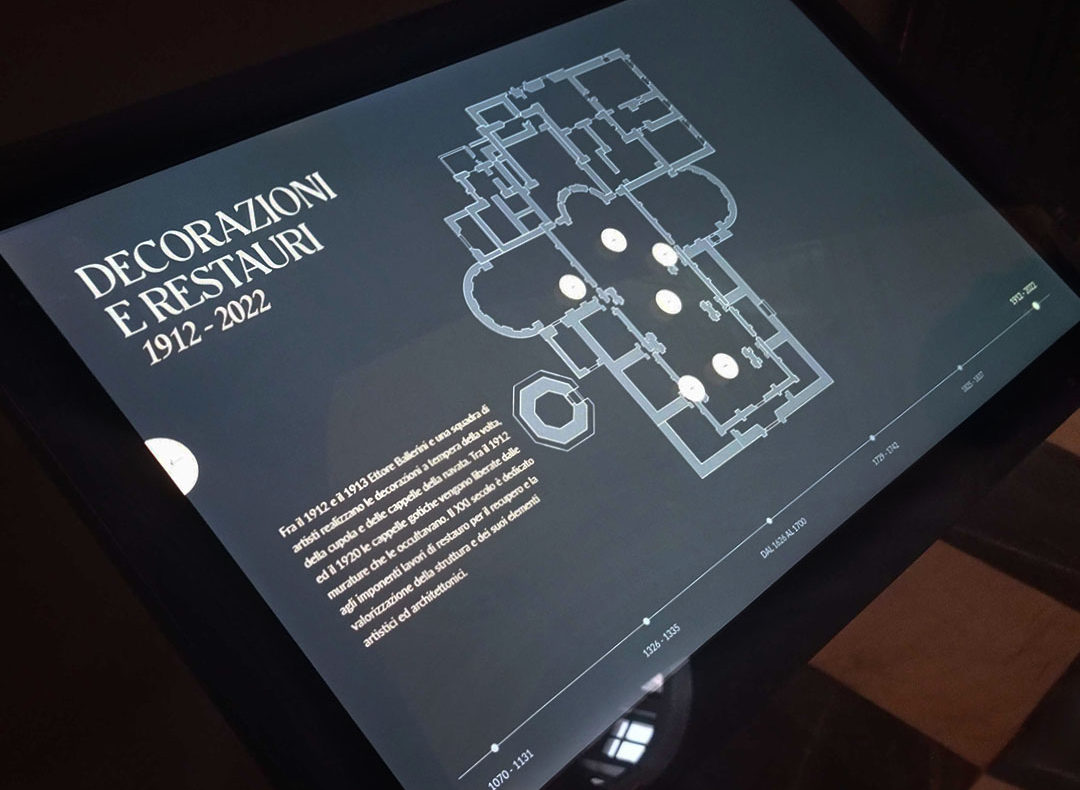
STRUCTURE AND CONTENT
Following the introduction that provides contextual insight into the monument, the interface displays the cathedral’s map integrated into a six-stage chronological timeline. The plan highlights the sections that were already built while fading those that were yet to be completed, to help understand visually the evolution of the building. On top of it, buttons pinpoint specific areas containing relevant information for each period.
When the user selects the area he wants to explore, the map zooms in and reveals the icons that contain the thematic insights. Each item is associated with a card with a detailed text description, high-resolution images, and in some cases, video interviews with the curators of the Segretariato and the Diocese that delve further into the living history of the cathedral and its treasures. All the contents of the totem are available in Italian and English.
TECHNICAL INFORMATION
SOFTWARE
- VueJS
- JavaScript
- HTML & CSS
HARDWARE
- Touch screen 24″
- Mini PC

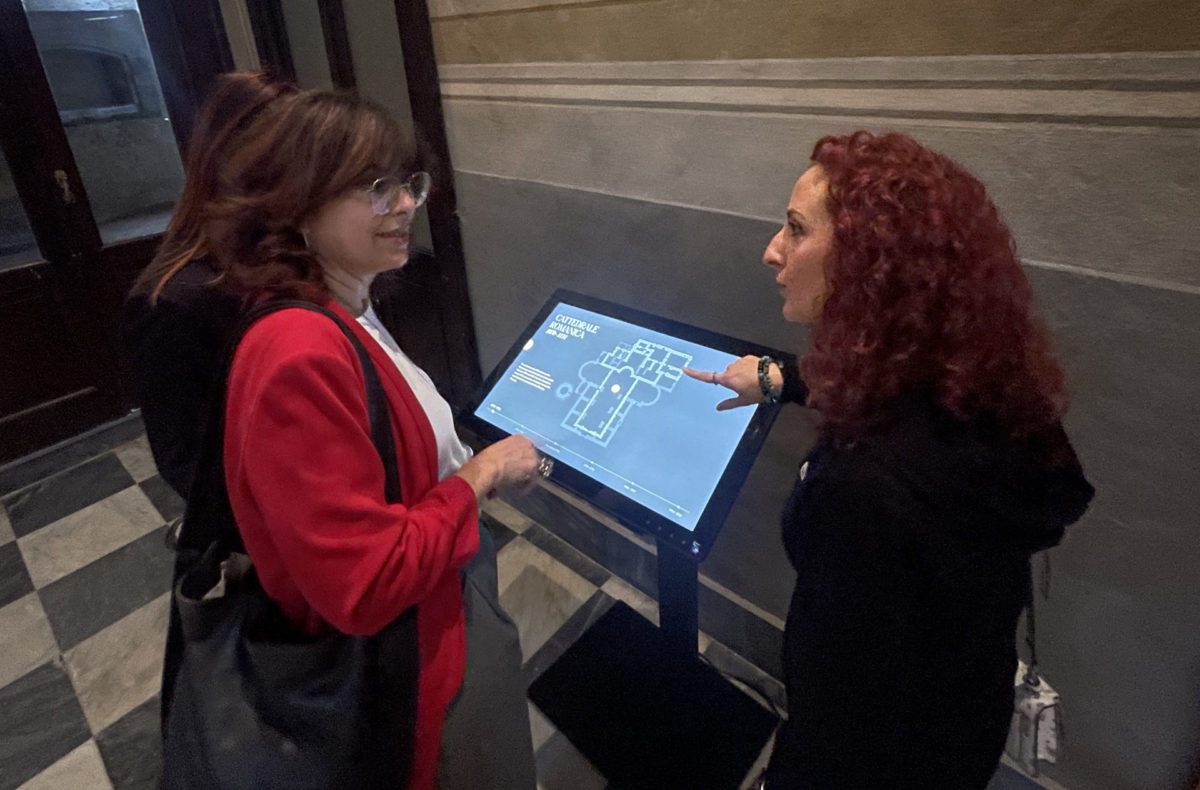
INAUGURATION AND PROMOTIONAL VIDEO
To promote the new tool, we at Visivalab have created a video to share across the communication channels and social networks of the Segretariato and the Diocese of Oristano. Through aerial shots of the cathedral’s exterior and interior and fragments showing the user experience, the video seeks to arouse the interest of potential visitors as well as introduce the totem to regular visitors.
The inauguration of the totem was attended by the MiC Regional Secretary, Dott.ssa Olivo, the ABAP Superintendent per la Città metropolitana di Cagliari e le province di Oristano e Sud Sardegna, Monica Stochino, the Archpriest of the Capitolo metropolitano della Cattedrale, Mons. Gianfranco Murru, and the parish priest of the cathedral, mons. Antonello Serra. During the event, two team members had the opportunity to present the tool and share the details of its user experience.
PRESS
New informative totem to discover Oristano’s cathedral
Oristano Noi
Oristano, a digital totem in the Cathedral explains the restoration
Videolina – L’Unione Sarda

